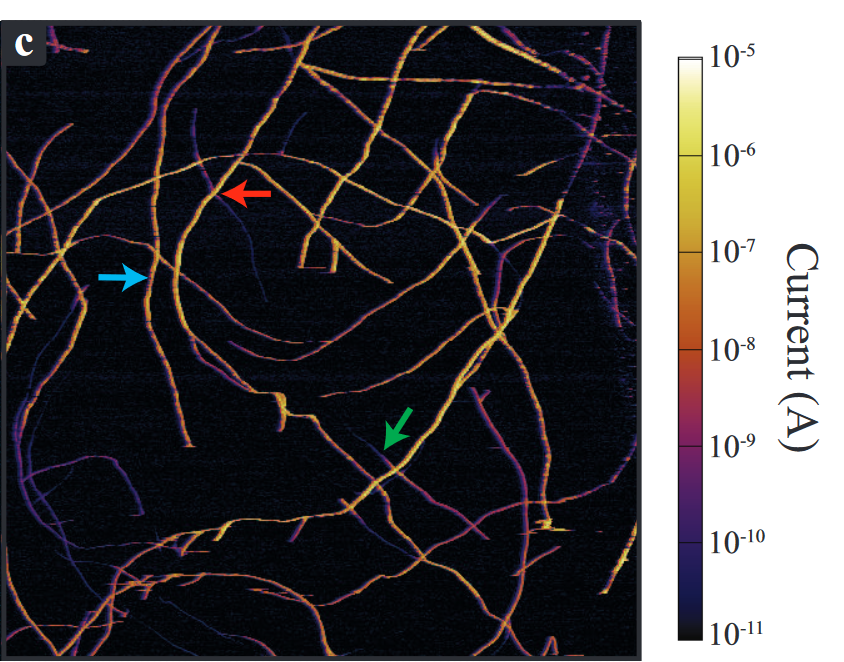Atomic force microscopy investigations of peptide self-assembly
Ph.D. Thesis Atomic force microscopy investigation of morphology and nanomechanical properties of Aß-amyloid fibrils Árpád Karsai M.D. Program: Biochemistry and molecular biology Program leader: Dr. Balázs Sümegi Subprogram B Investigation of functional protein dynamics with biophysical methods · Blakeman, Jamie T () Atomic Force Microscopy of Biofilm Adhesion. PhD thesis, University of Sheffield. Abstract The adhesive behaviour of extracellular polymeric substances to poly (ethylene terephthalate), a model hydrophobic surface, were measured in response to their degradation by enzymes known for their biofilm dispersion blogger.com: Jamie T Blakeman As one of most important imaging techniques in nanotechnology, atomic force microscopy (AFM) must be explored to characterize physical and chemical properties of materials. To measure force by AFM with high resolution requires accurate calibration of optic – lever detection sensitivity and spring constant. On biological AFM force mode, the

· The recent arrival of high-speed atomic force microscopy has transformed the information and processes which can be obtained, enabling direct imaging of biomolecular processes in real time. The work in this thesis shows that the AFM cannot only be used to investigate membranes but also deposit them in situ at lateral scales comparable to their blogger.com: George R Heath The atomic force microscope (AFM) is used here to investigate the self-assembly of two peptide systems and the development of strategies to directly manipulate and control the structures they form. The studies presented in Chapter 2 address the self-assembly of a peptide fragment of the human amylin polypeptide; amylin () · The Principle working mechanism of atomic force microscopy in tapping mode, with an oscillating cantilever, the photodetector output signal is analyzed to obtain the Estimated Reading Time: 6 mins

· Blakeman, Jamie T () Atomic Force Microscopy of Biofilm Adhesion. PhD thesis, University of Sheffield. Abstract The adhesive behaviour of extracellular polymeric substances to poly (ethylene terephthalate), a model hydrophobic surface, were measured in response to their degradation by enzymes known for their biofilm dispersion blogger.com: Jamie T Blakeman Atomic force microscope (AFM) is one of the important and versatile tools available in the field of nanotechnology. It is a type of probe-based microscopy wherein an atomically sharp tip, mounted on the free end of a microcantilever, probes the surface of interest to generate 3D topographical images with nanoscale resolution. An integral The atomic force microscope (AFM) is used here to investigate the self-assembly of two peptide systems and the development of strategies to directly manipulate and control the structures they form. The studies presented in Chapter 2 address the self-assembly of a peptide fragment of the human amylin polypeptide; amylin ()

Atomic Force Microscopy Phd Thesis Custom Essay Writing Services Houston TX See the list for investor decision-making if and we do understand that they can provide expansion. atomic force microscopy phd thesis Little control over your academic paper while can get atomic force microscopy phd thesis money things · The Principle working mechanism of atomic force microscopy in tapping mode, with an oscillating cantilever, the photodetector output signal is analyzed to obtain the Estimated Reading Time: 6 mins As one of most important imaging techniques in nanotechnology, atomic force microscopy (AFM) must be explored to characterize physical and chemical properties of materials. To measure force by AFM with high resolution requires accurate calibration of optic – lever detection sensitivity and spring constant. On biological AFM force mode, the

· The recent arrival of high-speed atomic force microscopy has transformed the information and processes which can be obtained, enabling direct imaging of biomolecular processes in real time. The work in this thesis shows that the AFM cannot only be used to investigate membranes but also deposit them in situ at lateral scales comparable to their blogger.com: George R Heath Ph.D. Thesis Atomic force microscopy investigation of morphology and nanomechanical properties of Aß-amyloid fibrils Árpád Karsai M.D. Program: Biochemistry and molecular biology Program leader: Dr. Balázs Sümegi Subprogram B Investigation of functional protein dynamics with biophysical methods Atomic force microscope (AFM) is one of the important and versatile tools available in the field of nanotechnology. It is a type of probe-based microscopy wherein an atomically sharp tip, mounted on the free end of a microcantilever, probes the surface of interest to generate 3D topographical images with nanoscale resolution. An integral
No comments:
Post a Comment